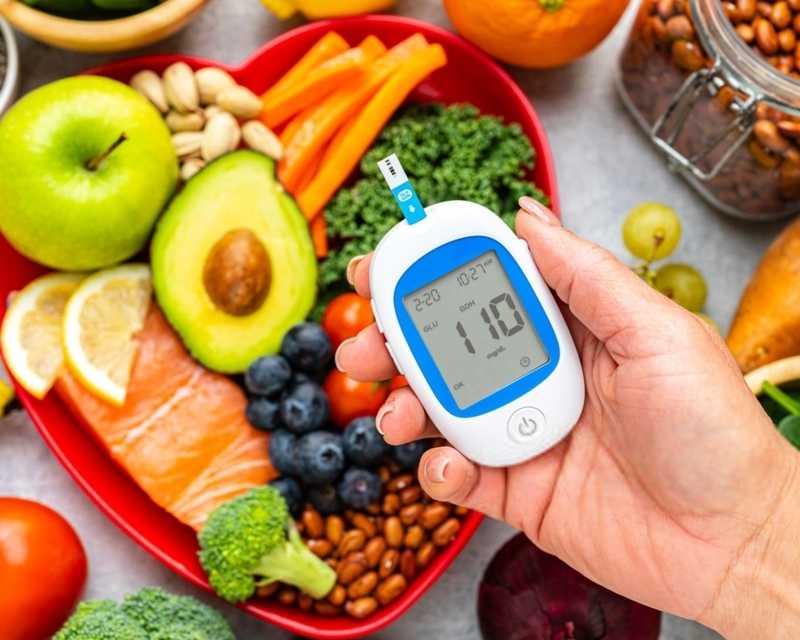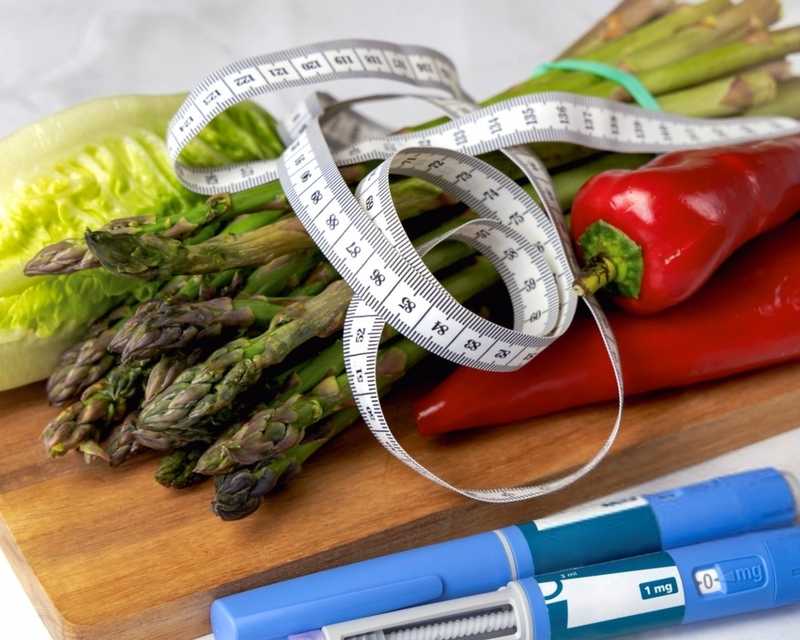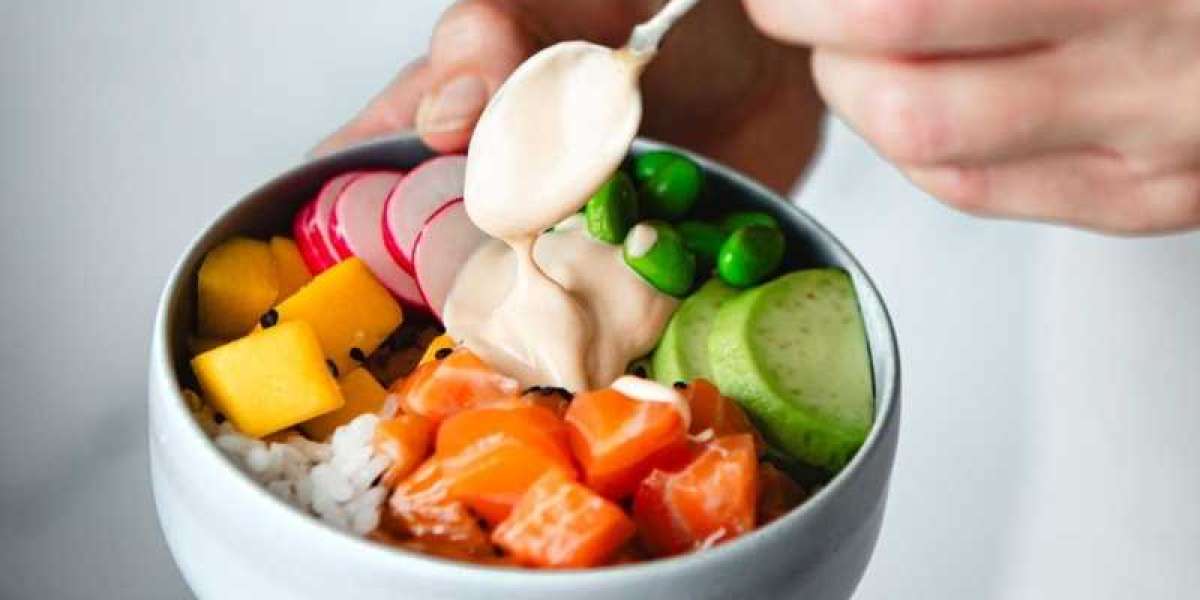- Metabolic disorders;
- Pancreatic dysfunction;
- Obesity;
- Adrenal gland pathologies;
- Weak immunity;
- Cardiovascular diseases.

Diet for diabetes is a mandatory component of overall therapy. Poor nutrition, bad habits, lack of physical activity, stress, and excessive alcohol consumption can all act as triggers for the disease. A lack of minerals and vitamins also negatively affects health.
Dietary recommendations are provided by an endocrinologist, who determines which foods to include in the diet, suggests specific sugar substitutes, and identifies foods to avoid. Nutrition for diabetes can significantly influence a patient’s condition. Consuming certain foods can improve or worsen the course of the disease.
The list of foods usually permitted for people with diabetes includes:
- Cottage cheese;
- Fish and seafood;
- Protein-bran and protein-wheat bread;
- Lean meats;
- Low-fat and unsalted soft and hard cheeses;
- Cereals — oatmeal, buckwheat, barley, pearl barley;
- Vegetables with carbohydrate content up to 5%;
- Sweet-and-sour berries and fruits.
Diet is as important as medication for diabetes because food directly influences blood sugar levels. All necessary medications can be purchased at the "Bazhajeemo zdorovya" pharmacy chain. It is also essential to follow a meal schedule as recommended by a doctor.
Why is it important to follow a diet for diabetes?
Diabetes is a metabolic disorder where the body’s cells cannot properly absorb sugar from the blood. Following a diet means monitoring the intake of carbohydrates, fats, and proteins, ensuring the proper balance of nutrients without exceeding the norm. The main objectives of a diabetes diet include:
- Controlling blood sugar levels;
- Reducing or maintaining body weight;
- Preventing high blood pressure;
- Regulating harmful cholesterol levels.
Consumption of high-calorie and fatty foods leads to a sharp rise in blood sugar. Rapid and significant glucose entry into the blood causes hyperglycemia. If levels rise to 15.5 mmol/L, the person enters a pre-comatose state. At 33.3 mmol/L, a hyperglycemic coma occurs. Persistent hyperglycemia damages the heart, kidneys, and nervous system.

What can you eat with diabetes?
With metabolic disorders, people with diabetes often gain excess weight. Therefore, it is necessary to not only monitor glucose intake but also control the caloric content of food. Such patients are recommended a special low-energy diet. The main principles of meal planning include:
- Reducing animal fats and easily digestible carbohydrates;
- Adding proteins within the norm;
- Eliminating sugar and all sweets;
- Limiting salt intake;
- Increasing foods rich in lipotropic substances, fiber, and vitamins.
Dishes should be prepared by baking, boiling, or stewing. Carbohydrates must be evenly distributed throughout meals. The daily diet is divided into 5-6 meals or 3 meals in the case of Type 2 diabetes.
What foods are permitted, how to combine them, and how to balance your diet?
Flour products
Bread is allowed in quantities of 300 g per day. Acceptable types include:
- Rye bread;
- Protein-bran bread;
- Protein-wheat bread;
- Wheat bread of grade 2.
Sometimes bread can be replaced with other products made from unsweetened dough, but the daily quantity must not be exceeded.
Soups
Vegetable soups and borscht are permitted. Meat, fish, or mushroom broths are also allowed but should be weak and low-fat. Such soups may include meatballs, grains, and vegetables.
Meat and poultry
The list of permitted lean meats and poultry includes:
- Beef;
- Trimmed pork;
- Veal;
- Rabbit;
- Turkey;
- Chicken.
These meats should be cooked by stewing, boiling, or baking in whole or chopped form. Occasionally, special diabetic sausages, boiled tongue, or small amounts of chicken liver may be included.
Seafood and fish
Lean fish can be consumed in stewed, boiled, or baked forms. Recommended river and sea fish include:
- Pike;
- Carp;
- Pike perch;
- Hake;
- Cod.
Occasionally, high-quality canned fish in its juice or tomato sauce is allowed. Low-fat tuna, shrimp, and seaweed are also permitted.

Dairy products
Preference should be given to fermented milk products: cottage cheese, yogurt, fermented baked milk, kefir, and buttermilk. Low-fat and unsalted hard and soft cheeses are recommended, but their caloric value must be monitored. Sour cream should be limited. Milk is allowed up to 500 ml per day.
Cereals
It is important to consider the carbohydrate content and glycemic index of grains. Recommended cereals for porridge or soups include:
- Rolled oats;
- Pearl barley;
- Buckwheat;
- Millet;
- Barley groats.
Legumes can also be included. Brown or unpolished rice is allowed occasionally.
Oils
Olive, corn, or sunflower oils (cold-pressed) are beneficial. Butter is allowed but limited to 25 g per day. Oils should be added to vegetable salads.
Vegetables
Potatoes, beets, carrots, and green peas are allowed in limited amounts based on carbohydrate norms. Preferable vegetables include:
- Zucchini;
- Cabbage;
- Eggplant;
- Pumpkin;
- Cucumbers;
- Tomatoes.
Leafy greens and radishes can also be added. The total mass of low-carb vegetables should not exceed 500 g per day.
Fruits, berries, and beverages
Fruits and berries are necessary but must be carefully chosen. Recommended options contain 5–10 g of carbohydrates per 100 g of product:
- Unsweetened apple varieties;
- Strawberries;
- Currants;
- Raspberries;
- Lemons;
- Oranges;
- Grapefruits.
These fruits can be used to make compotes, sugar-free juices, jellies, or mousses. Recommended beverages include chicory, unsweetened fruit and vegetable juices, rosehip decoctions, weak coffee, and tea with milk.
What is strictly forbidden to eat with diabetes?
Strictly forbidden foods include:
- Baked goods made from rich or puff pastry;
- Pasta;
- Semolina and white rice;
- Smoked meats;
- Canned foods in oil;
- Fatty goose or duck meat;
- Pork fat and lard;
- High-cholesterol foods — liver, egg yolks;
- Salty cheeses;
- Sweet curd mass;
- Pickled and marinated vegetables;
- Sweet fruits — figs, dates, melons, bananas, grapes, peaches;
- Sweets — cakes, creams, ice cream, candies, jam.
Alcohol consumption is allowed in very limited amounts. Drinks with high sugar content, such as sweet wines and liqueurs, should be avoided. Small amounts of high-quality cognac, dry wine, whiskey, or vodka are permissible.
Diet for Type 1 and Type 2 diabetes does not differ significantly. The list of prohibited and permitted foods remains the same, except that people with Type 2 diabetes should drink more water. With proper nutrition, it is possible to lower blood sugar levels and maintain them at a safe level, preventing risky spikes.














